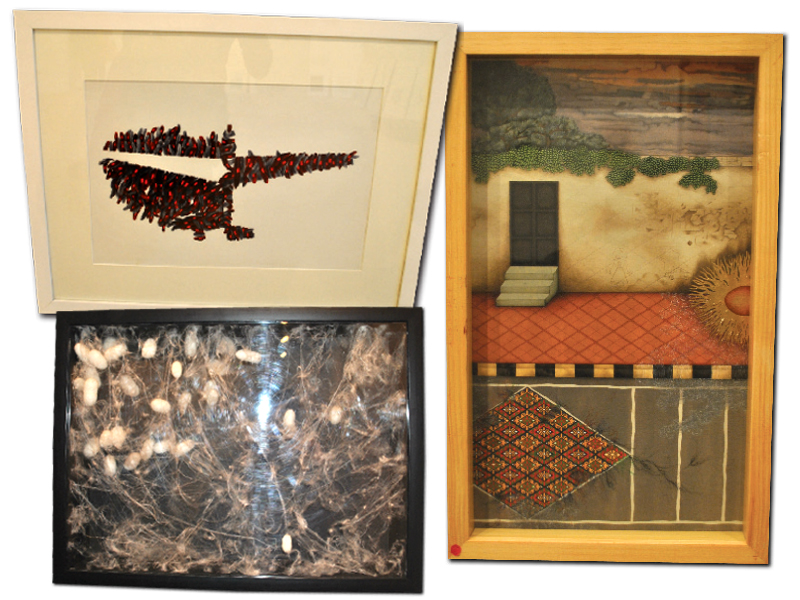
For Shakila Haider, an ethnic Hazara, the persecution of her community has lasted a lot longer than the last few years of targeted killings and bomb blasts in Balochistan. Her family lived earlier in Afghanistan, where her father was prosecuted for suspicion of being a Soviet sympathiser.
“I’m the second generation in my family living in dismal, war-like conditions,” said Haider, a miniaturist, one of three from Quetta graduating from the National College of Arts this year.
No wonder that her work on display at the NCA annual thesis exhibit focuses on violence against Hazaras. She received one of the three distinctions in miniatures.
“I have used the artist in me to highlight the sentiments of my community … the discrimination, the hate and the murder we face,” said Haider, 23.
One of her paintings shows a map tracing the migratory routes of Hazaras from Central Asia to Afghanistan and Balochistan.
Haider, 23, had a total of 13 paintings and a book on display. The book included original pages of her father’s diary, with miniatures she had painted elaborating the Persian text.
All her pieces, though priced starting at Rs45,000, higher than her classmates, were sold out. The most expensive, Effects of Blind Causes for Rs250,000, took Haider seven months to complete.
“I have received tremendous appreciation for my efforts,” said Haider, who now plans to go abroad for a graduate programme in fine arts.
Ramazan Ali Jafri, 23, also received a distinction for his pieces, using traditional fabrics and clothing made and worn by Hazaras settled in Tajikistan, Afghanistan and Balochistan.
Two paintings titled Gul Goh Qabbah (Persian for, ‘The bride’s red clothes’) I and II, show worn-out children’s clothes. The distortion and the breaking out of threads and patches represent the harm done to the Hazaras in Quetta, said Jafri.
Another painting, Qaide Maqami, shows a pedestrian walkway wrapped in bandages before a closed door. “It shows we are trapped. We cannot go beyond the doorsteps of our homes. We cannot move freely,” said Jafri, who had chosen 10 pieces of the 25 in his portfolio for display.
The work of Shah Abdullah, also an ethnic Hazara, focused on “self exploration”.
A total of 12 miniaturists displayed art at the thesis exhibition. The 11 pieces by Yasser Waqas, the third miniaturist awarded a distinction, displayed the tension between two ideas.
“There’s an idea of a profession being imposed on teenagers by their parents, and another idea that most have thought of what they want to study or do. Usually this gives rise to conflict. It either destroys a young person’s personality or makes him strong and confident,” said Waqas.
The artist said that the work expressed his own story. “My father was an aircraft mechanic and wanted me to become a pilot, which I did. But eventually, I reverted to my first love, which is making art,” he said. The artist has sold 14 paintings so far.
Amna Manzoor’s work, also a sell out, revolved around the theme of “conditioning and training girls for marriage”.
Girls are trained to host, serve, sit properly and focus on beautifying themselves, she said. “My work shows how a family conditions girls from the very beginning,” she said. Her works were priced between Rs30,000 and Rs40,000.
The exhibit was to end on January 20, but will now conclude on January 27.
Published in The Express Tribune, January 24th, 2013.

















COMMENTS
Comments are moderated and generally will be posted if they are on-topic and not abusive.
For more information, please see our Comments FAQ